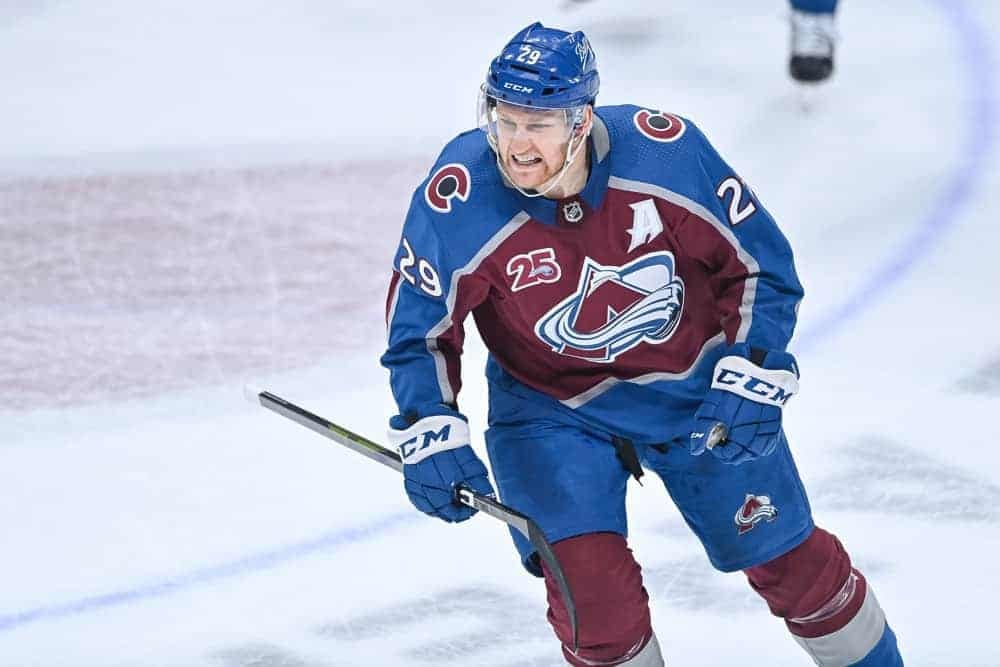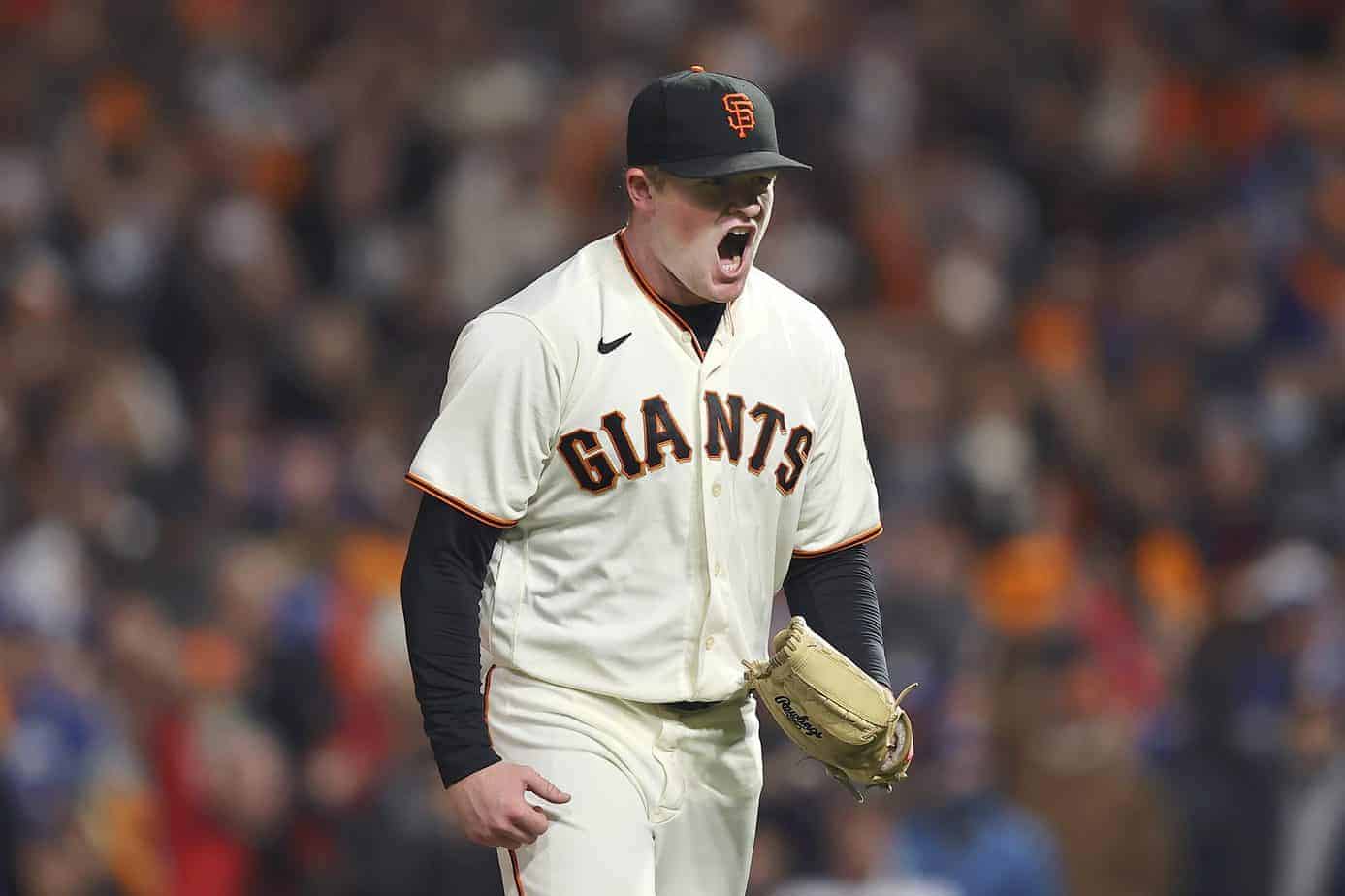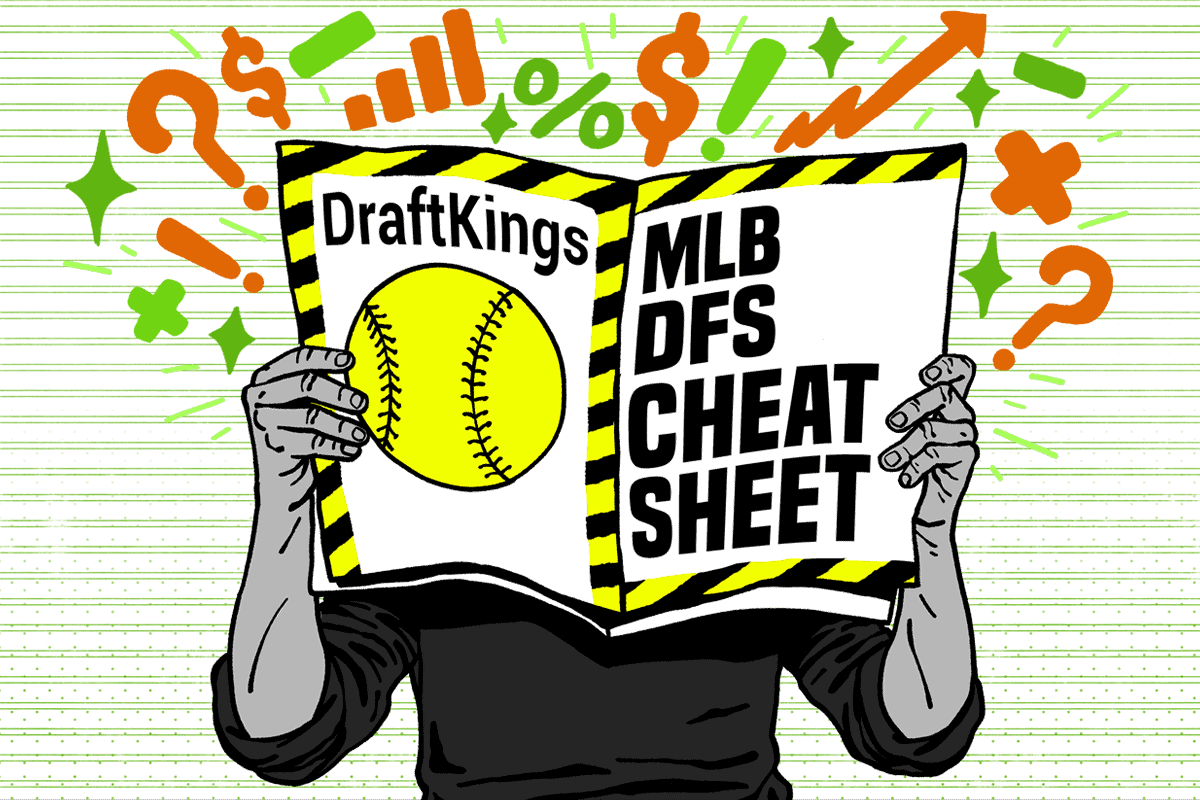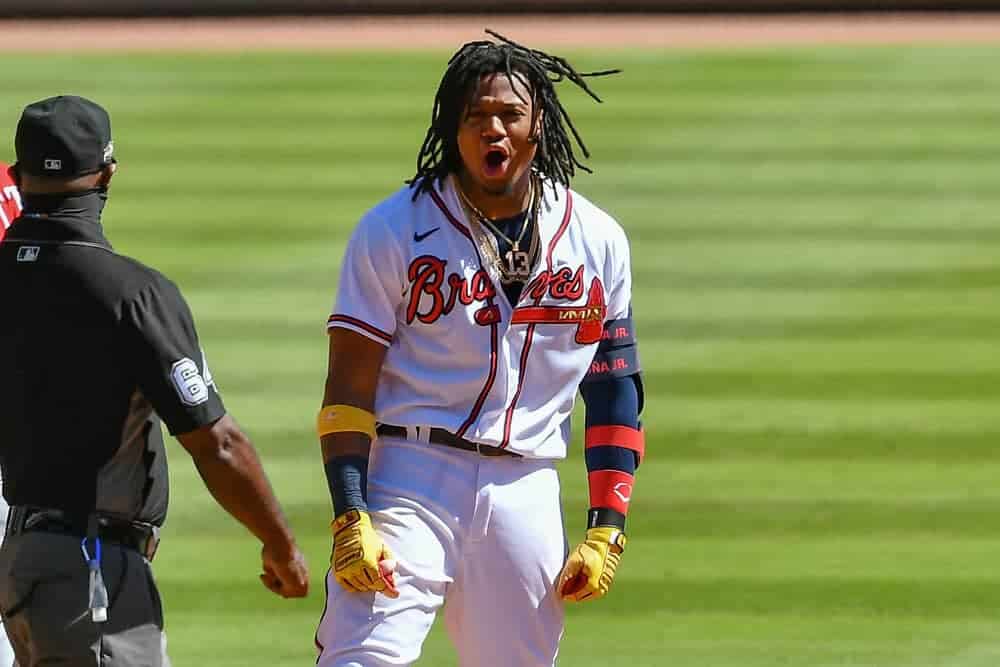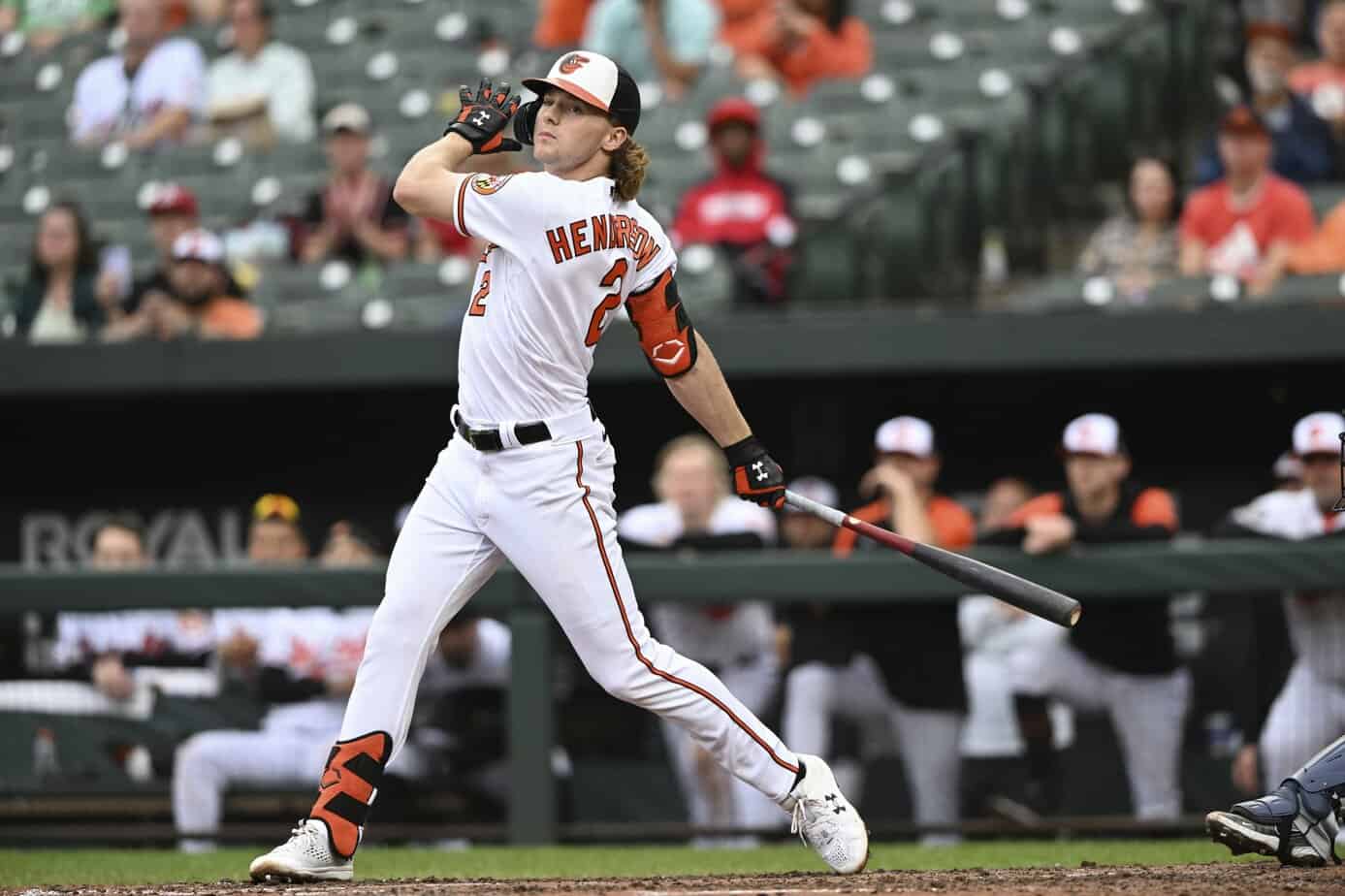No new NBA games does not have to mean the end of NBA DFS action. We here at Awesemo are committed to bringing you contests while sports are on hiatus. And that continues today with Awesemo’s NBA2K Daily Challenge, featuring the 2015-16 Cavaliers vs. 1994-95 Knicks. Here’s what we’re doing: over the next few weeks, we’re giving away $20,000+ in prizes in FREE TO PLAY contests based on simulated NBA games that will air on YouTube and Twitch streams involving your favorite Awesemo personalities. There will be Daily Contests where you are asked to predict aspects of the day’s simulated game. Get the most correct answers and you’ll be eligible for great prizes. Today’s is a Fitbit Versa 2!
NBA2K DAILY CHALLENGE FORM
And of course, FanDuel is hosting it’s own FREEROLL for every Awesemo game:
FANDUEL FREEROLL with 2K in Bonus Cash!
Through April 3, we’ll also be running a $15,000 Bracket Challenge with $10,000 to first. You have made your bracket picks and if you get the highest score, you could walk away with $10,000.
Additional details regarding both the $15,000 Bracket Challenge and the Daily Contests, including full Terms and Conditions, are available here: https:www.awesemo.com/nba2k. Thank you for supporting us and we’re thrilled to have this opportunity to give something back. We aren’t going anywhere and hope you feel the same.
Be sure to check out the Bracketology show with Josh Engleman, Dave Loughran and Ben Rasa!
Now let’s get into the next matchup between the 2015-16 Cavaliers vs. 1994-95 Knicks.
The Teams
2015-16 Cavaliers
Starters:
PG – Kyrie Irving
SG – J.R. Smith
SF – LeBron James
PF – Kevin Love
C – Tristan Thompson
Following LeBron James’ departure in 2010, the Cavaliers shifted their identity from mono-star competitive teams to mono-star non-competitive teams with a healthy dose of drafting flubs thrown in. From 2010 to LeBron’s return in 2014, the Cavs selected in the top five four times, including two No. 1 overall picks. In that time, only Kyrie Irving became a star. Two guys became modest role players and the other No. 1 pick, Anthony Bennett, flopped spectacularly. And how did the basketball deities reward this poor drafting? Why, by awarding them the No. 1 pick again in 2014! With that pick, they selected Andrew Wiggins.
Fortunately for Cleveland, they had some new-found leverage. LeBron opted out of his contract the day before the draft and there was growing speculation he was going to leave Miami. Then a few weeks later, he announced dramatically that he was returning to the Cavaliers, and to supply him with talent he did not have in his first Cleveland stint, the Cavs sent Wiggins to Minnesota for Kevin Love. Thus, with James, Irving and Love, Cleveland had something resembling the superteam James had in Miami.
Their success was immediate, but also modest in terms of the regular season. Cleveland won only 53 games in 2014-15. However, they coasted through the East playoffs before a competitive but disappointing loss to the Warriors in the Finals. Come 2015-16, with a full offseason together and increased motivation, the Cavaliers were heavily favored to come out of the East again. And despite some tumult, including a midseason coaching change, they finished top-10 in offensive and defensive rating and again plowed through the East for a matchup with the Warriors.
This Warriors team, however, was a bit different from the year prior. The roster was virtually unchanged, but Golden State was coming in off a record 73-win season and hard-fought win over a talented Thunder squad. And the favored Warriors got up big in the series, taking a 3-1 lead. But Cleveland bounced back, taking the next two easily and forcing a Game 7. In one of the most memorable Game 7’s ever, the Warriors went up at half thanks to hot shooting from Draymond Green. But James and Irving brought the Cavs back, and a highlight reel play from each shifted the series to Cleveland. The much-replayed LeBron block on Andre Iguodala led to Irving’s go-ahead 3 a minute later, and then Love made an out-of-character defensive stop on Stephen Curry to essentially put the game out of reach. And with that, Cleveland took home its first-ever title.
1994-95 Knicks
PG – Derek Harper
SG – John Starks
SF – Charles Smith
PF – Charles Oakley
C – Patrick Ewing
I am going to start out this analysis with some brutal honesty: the 1993-94 Knicks were a better team and the fact that 2K features the 1994-95 Knicks instead is strange. The previous Knicks team won two more games, made the Finals rather than just the East semis and had John Starks at an All-Star level. The only standout feature of the 1994-95 team was their top-ranked defense, but the 1993-94 team also had the top defensive rating in the league. Pragmatically, the 1995 Knicks are remembered best for two massive disappointments against the Pacers and not for team excellence. But I digress.
The early-to-mid-’90s Knicks were fun and heartbreaking. They had one of the best players in the league in his prime, an upstart scorer in his prime and one of the top coaches. And yet, due to the Jordan Bulls and Olajuwon Rockets, the Knicks fell short of the title each and every year. In 1994, they got painstakingly close, falling to the Rockets in seven games after finally defeating Chicago in the East semis. After coming so close, the 1994-95 team was looking to avenge the defeat as the lack of Michael Jordan had the Eastern Conference looking wide open.
New York rode a strong defense — No. 1 in the league by defensive rating — to 55 wins and the second-best record in the conference. But since they shared their division with the top-seeded Magic, New York had to settle for the third seed. They dispatched of the Cavs in the first round easily, but they then had to take on a tough Pacers team in round 2. And things started off ugly. In the waning seconds of Game 1, with the Knicks win effectively in hand, Reggie Miller scored eight points in nine seconds to steal the win and home court advantage. After New York blew out Indiana in Game 2, Indiana took two straight to go up 3-1. Then a pair of hard-fought wins for the Knicks sent it to Game 7 at Madison Square Garden.
With Indiana up two and seconds left, Patrick Ewing got the ball and was double-teamed. He astutely maneuvered around the defense and got a clean look at a game-tying finger roll. It hit back iron and bounced out and the Pacers by the skin of their teeth knocked off the defending East champs.
Check us out on TWITTER, where we talk sports, share articles and have lots of giveaways. Just click HERE
The Studs
LeBron James
This is the first time we have been able to break down a true top-five player ever for our 2K tournament. There have been some players who come close — Kobe, Duncan, Shaq, Hakeem, all could throw their name in that ring. However, LeBron is the first where there is no argument against him in that regard. He is, by any measure, in the starting five if the greatest of all time formed a team. That can be quantified and qualified in all sorts of ways, from his nine trips to the Finals, many of which came with lackluster supporting casts, to his four MVPs to his 11 straight First-Team All-NBA honors. Or maybe the numbers tell it best with career averages of 27.1, 7.4 and 7.4. However you want to explain it, LeBron is the best basketball player of the post-Jordan era.
An underrated aspect of LeBron’s legacy is the fact that he made eight consecutive Finals appearances with two separate franchises. Sure, he played in the far weaker Eastern Conference and only three of those resulted in titles, but James was the common denominator in every championship matchup for close to a decade. Since Bill Russell‘s Celtics, the only player who can stand on that podium with James is Magic Johnson, who made nine Finals in 12 years. And like Kevin Durant yesterday, James’ championship resume is picked apart because of his forming of the Miami Heat superteam. Despite their collection of talent, they only won twice in four trips to the Finals. But even if that is a sticking point for some, LeBron’s second run with the Cavs showed that he can carry championship teams in ways few others ever have.
In 2015-16, James’ second year back with Cleveland, he was coming off a disappointing Finals loss to the Warriors the year before. The regular season was a somewhat pedestrian one for him with 25.3 points, 7.4 rebounds and 6.8 assists, though he shot great at 52 percent from the field. However, once playoff time rolled around, James and the Cavs took off. He averaged nearly a double-double through the playoffs, and in his rematch with Golden State, he led all players in scoring, rebounds, assists, steals and blocks. That is the version of LeBron James we will see in this matchup, and it is arguably as all-around unstoppable as any player has ever been.
Kyrie Irving
If I’ve said it once, I’ve said it a thousand times: great players are at their best when they have a wing man. And for better or worse, that guy for LeBron was Irving in 2015-16. That is not to say Irving did not enter into that role begrudgingly, nor did he exit it gracefully. But this brief combination of James and Irving was the best form Irving has taken in his career, even if his numbers were modest by his standards
Irving, the No.1 pick in 2011, was essentially the Cavaliers’ plan to rebuild following LeBron’s exit to Miami. And for three years, he was an exciting scorer and All-Star who made the Cavs relevant, even if they did not win many games. But when LeBron returned, Irving had to take a slightly different role, at least at first. Rather than being the ball-dominant point guard he was used to playing, Irving had to play off-ball more, defer more than he ever had before. And Cleveland made the Finals with that strategy. The next year, however, James and Irving coexisted in a different way. Irving became the superstar scorer who could take over a game at a moment’s notice so that LeBron did not have to at all times. It kept both of them fresher down the stretch and made the Cavaliers offense lethal.
Irving got even better at it come playoff time. In the 2015-16 postseason, he averaged 25.2 points a game, including shooting 44 percent from 3 as the Cavs rolled through the East. He even outplayed Curry in the Finals with 27.1 and shooting at a higher clip than the league MVP. In fact, though LeBron’s heroics are remembered most fondly, Irving hit the shot of the series with under a minute to go in Game 7, burying the go-ahead 3 in Curry’s face. That shot essentially won Cleveland the championship. And yet, because of everything that has happened with Irving since, including the acrimonious split with the Cavs in 2017, Irving’s role in three Cavs’ Finals teams is undersold. He was and remains one of the best iso players in the game, and in this matchup, could easily outscore James.
Patrick Ewing
The late ’80s into the ’90s was the greatest era for centers in the history of the NBA. Many of the greatest at the position flourished, from Hakeem Olajuwon to Shaquille O’Neal, Dikembe Mutombo to David Robinson. But of all of them, the one who entered the league with the most hype was Ewing. Ewing was a transcendent talent at Georgetown with his superb ability in the post and his astute defensive acumen. In 1985, he went No. 1 overall to the Knicks, who then immediately locked him into a 10-year deal, signifying their confidence he would forge a path as the best in the game.
And truth be told, Ewing was never really the best center in the NBA. He was consistently behind Olajuwon during their primes, and jockeyed for position with Robinson and O’Neal for the title of No. 2 for 15 years. And yet, Ewing still made his mark as one of the best two-way players at his position ever. He posted 21 and 9.8 for his career despite injury troubles in his early and later years, and with a whopping 2.4 blocks a game. He averaged at least three a game five straight years from 1987-88 to 1991-92, making the All-Defensive Team in three of those years. He ranks eighth all-time in total blocks, just ahead of O’Neal and just behind Robinson.
Ewing’s versatile post game, including an underrated jump shot, made him the go-to guy in the Knicks offense his entire career, through multiple regimes of talent. The Knicks never truly put a strong No. 2 next to him in his prime, though they tried with Starks, and as such, Ewing and the Knicks continually fell short to the Jordan Bulls. Five times in the ’90s the Knicks played Chicago in the playoffs and four times it resulted in a Knicks exit. The one time it did not was 1994, after Jordan’s first retirement. That has generally been the legacy of Patrick Ewing despite 11 All-Stars, seven All-NBA Teams and a spot in the Hall of Fame. The best way to describe Ewing’s career is 15 years of being consistently great but just a half step shy of fully transcendent.
The Role Players
Cavaliers
Kevin Love – A 16 and 10 average in theory would make Love a Stud, but he was a far more peripheral player come playoff time. Under coach David Blatt, and later Tyronn Lue, Love’s offensive game was mostly limited to corner 3’s and pick-and-pop, so his shooting percentage and scoring volume took a hit. And in the postseason, though he shot well from 3, he was also a defensive liability, so Love did not see the floor often in crunch time. The best way to boil down 2016 Kevin Love to his essence is “Rebound, outlet, run to the corner.” It was an effective role, but it was also a far cry from his 30-30 days as a Timberwolf.
J.R. Smith – SB Nation described Smith best as “The Best Player to Never Know What’s Going On.” It is an apt description, because Smith was, in his prime, a talented scorer with game-breaking ability, and yet many of his best-remembered moments are his gaffes and lapses in judgment. But focusing on the positives, 2015-16 Smith was a capable scorer and solid 3-point threat who served as one of the better fourth options you will see. He was not far removed from his run as the league’s top sixth man with the Knicks, and Smith played a vital role down the stretch for Cleveland.
Tristan Thompson – Drafted three picks after Irving, Thompson has been a solid player and a Cavs lifer, though he has never been a star. Offensively, he has always been mostly a rim runner and garbage man, getting putbacks and finishing alley-oops. He has also been a strong rebounder his entire career, averaging at least eight a game in seven of nine NBA seasons. In 2015-16, Thompson started some, but mostly came off the bench as a burst of energy in the paint. He averaged 7.8 points and nine rebounds that year.
Knicks
The Knicks entire starting lineup plus sixth man Hubert Davis averaged double figures, so their Role Players section is a bit longer than most.
John Starks – I know Knicks fans from this era will beat down doors to assert Starks belongs in the Stud category, and perhaps if this was the 1994 Finals Knick team, he would. But this version of Starks shot below 40 percent from the field with only 15 points a game. He was, however, also one of the early adopters of the volume 3, as he led the league in both attempts and makes from deep in 1994-95. However, that was effectively the extent of his scoring that year and he only made 35.5 percent of 3’s. In this matchup, he will definitely be the Knicks’ highest-volume chucker, but he does not quite fit into Stud territory.
Charles Oakley – The enforcer for Starks and Ewing, and Michael Jordan before them, Oakley made a long career setting hard screens and making sure opponents felt his presence. He was starting to hit his downswing as far as box score production in 1994-95, but Oakley still averaged 10.1 and 8.9 and would go on to play another nine season before calling it quits.
Charles Smith – Smith was a solid scorer who the Knicks acquired in 1992 in the hopes of adding a true No. 2 to Ewing. He was a 20-point scorer with the Clippers in his early years before joining New York. He never reached that echelon, and in fact became the face of one of the Knicks’ collapses to the Bulls when in 1993 he was blocked four times on game-winning layup attempts in the final seconds of the Eastern Finals Game 5. Still, Smith was a big combo forward who could provide New York some decent scoring punch in this matchup with Cleveland.
Derek Harper – Harper was a 12-year veteran at this time, and while he had been a go-to scorer earlier in his career, with the Knicks, Harper was offensively more of a facilitator and shooter. He averaged 11.5 and 5.7 in 1994-95 and was second behind Starks in 3’s taken. More importantly, Harper was the Knicks defensive stopper at guard, and he will have his hands full with Irving in this matchup.
FanDuel Plays
MVP – Kyrie Irving – $14,000
If the last few days of 2K sims have shown anything, it is that ball-dominant, high-volume point guards are the best candidates to stuff the box score. Russell Westbrook, Tony Parker, Stephen Curry and John Stockton all dominated their respective games in the last week. And though LeBron is the icon of this matchup and will bring the ball up the floor plenty, Irving is live to put up a ton of 3’s and dish out a lot of assists.
Star – Kevin Love – $13,000
2K has shown to be hit or miss with how they diagnose big men’s shooting propensity and ability. For examply, Nazr Mohammed jacked up a bunch of long 2’s but Tim Duncan, an actual decent shooter, passed up every open jumper he had. So if 2K evaluates Love’s 2015-16 role correctly and has him take the open jumpers that big men are consistently getting, then Love could enter double-double territory. Especially relative to his era, Love may be the best rebounder in this matchup, and he will be around the basket a lot defensively with Oakley never venturing far. I love Love in this spot.
Pro – John Starks – $13,500
By the same token as Irving, it seems safe to lean towards the Knicks most oft-used ball handler as their actual leading scorer, Ewing, was primarily a post-up isolation guy. With the exception of Hakeem Olajuwon and maybe Shaquille O’Neal, that style has not shown to produce a ton of points. So again, I am going to lean into the trends of one ball-dominant player monopolizing shots and rolling with Starks to put up a lot of points early.
Looking for more NBA DFS picks content? We’ve got loads of articles, data, cheatsheets and more on the Awesemo NBA home page, just click HERE

